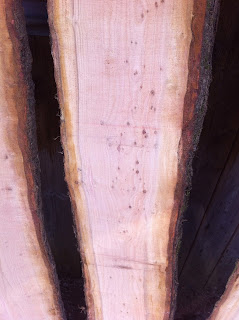Eventually I decided on Beech. I've only ever used it on a couple of turnings before and never on furniture so was a little excited when I discovered the random piece in the corner of my workshop....
Originally the inspiration was an Arts & Crafts style table my father owned, although it looks nothing like it.
It allows for very delicate legs to be turned.
The table has been finished with some discrete pieces of Jarrah used as wedges for the tenons and small insets in the legs... just for decorative purposes...
Ok, so the 2nd & 3rd ones were intentional... ahem...




















































